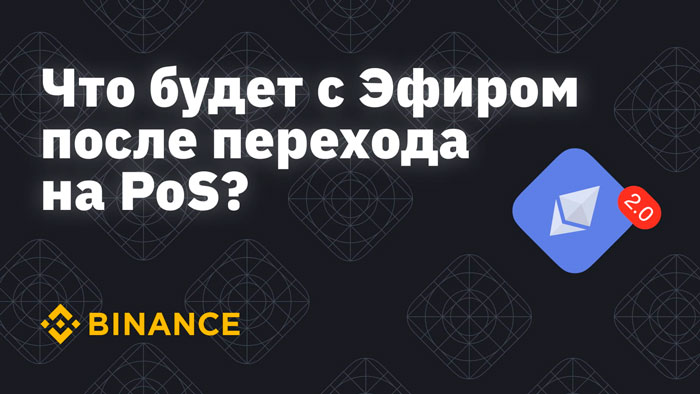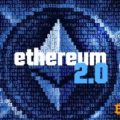
According to the developers' plans, in 2022, the Ethereum blockchain will switch to the Proof-of-Stake (PoS) mining algorithm.It will bemean the termination of the production of ETH using specialized equipment. Now the key value will be played by the number of tokens that are stored in the user's account.
Features of Ethereum mining in 2021
Initially, the Ethereum blockchain usesProof-of-Work (PoW) consensus algorithm - proof of work. With such a mechanism for the functioning of the network, the creation and verification of new blocks occurs by solving mathematical problems. This process requires tremendous computing power. It can be performed using special equipment:
- processors;
- video cards;
- ASIC (Application-Specific Integrated Circuit).
It is worth considering that in this case there are noI mean processors and video cards from a regular PC. Such equipment has significantly higher productivity and is created specifically for mining. This technique provides the level of computational processes needed to solve a cryptographic problem.
As soon as the problem is solved, the created blocktaken into the general chain. And the one who managed to get the decision is paid a reward. The same principle of adding blocks is used in the Bitcoin blockchain.
The main disadvantage of Proof-of-Work is thatthat it forces miners to buy expensive equipment. Unlike the BTC blockchain, Ethereum developers have made this process more accessible, since this network uses a slightly different hashing algorithm - Ethash. However, with the growing popularity of the Ethereum cryptocurrency, the complexity of its production has increased significantly, and also requires enormous power.
Today for mining BTS you need to useonly ASIC, and it is advisable to assemble farms from them to obtain a high hashrate. But AMD and Nvidia graphics processors (GPUs) are also suitable for mining coins on Ethereum. So you still have to spend money on hardware.
It should be noted that the process of mining in the blockchainEthereum is gradually losing its fairness. Miners with a reserve of funds buy special integrated circuits designed to mine ETH. This gives them the ability to mine blocks faster than GPU users.
As a result, ordinary GPU miners becameearn undershoots, and some of them have switched to the production of other assets. Many users began to express their outrage at the fact that the Ethereum technical document says about the network's resistance to ASIC mining, but in reality everything is different.
The only way to compete with the Ashiks is to collect farms that not everyone can afford. An alternative option is to combine your technical capacities by forming mining pools.
Ethereum's transition to PoS
Ethereum developers are aware of the problem withdifficulty of mining and plan to replace the consensus mechanism. Around the 3rd quarter of 2022, the Ethereum blockchain will switch to the Proof-of-Stake (PoS) algorithm.
This is an alternative way to add a new blockin a chain. When using it, there is no need for powerful equipment - no more complex tasks need to be solved. Any users can participate in the mining of coins, including those with ordinary PCs or smartphones.
Despite the fact that the difficulties with the purchase of an expensivetechnicians will leave, a new problem will appear - the need to have a large amount for staking and mining, since when using PoS, there are more chances to get a block from someone who holds a lot of coins. That is, the share of assets is used as evidence (instead of solving problems). Accordingly, now users will have a new goal: to get more Ether tokens in order to increase their chances of making a profit.
In addition to changing the proof algorithmOnce the proof-of-stake work is completed, sharding will appear in the second version of Ethereum. This is the name for dividing a single set of data and storing it in the form of multiple databases. The main advantage of sharding is that it allows you to increase the speed of transactions by 64 times.
The updated network will be called Ethereum 2.0, and validators will take responsibility for its security.
What to do for ETH miners in 2021
For those who mine coins on Ethereum 1.0, you need to think about moving to a new consensus mechanism. Until the end of this year and in the first half of the next, ASICs and video card farms will still be able to bring ETH. But then the PoW mining method will no longer be available. As a result, the purchased equipment will have to be used for mining in other networks. Some experts are focused on moving to work with cryptocurrencies such as Ravencoin and Ethereum Classic.
If the goal is to mine exactly ETH, then alreadynow it is worth stocking up on coins, which you can then steak (freeze). Without blocked tokens, it will not work to mine Ether and receive a reward for working as a validator.
Validators are network participants whocheck the generated blocks for compliance with the blockchain requirements. To obtain this status, you need to block 32 ETH. At the current ETH/USDT rate, this is approximately 140 thousand dollars. And at the ETH/RUB rate – more than 10 million rubles.
If the inspector admits to the systempoor quality block, it will lose all locked coins. For this reason, none of the validators is interested in violating the requirements in favor of any network participant. All of this should make the Ethereum 2.0 blockchain tangibly safer.
According to Ethereum developer Tim Beiko,miners now need to start the process of abandoning the use of ASICs and video cards. The gradual transition to working with a new consensus mechanism will be less painful than an abrupt change in the way of mining.
Certain changes have already been made inthis year. In August, the developers launched the EIP-1559 update. Now work with gas is automated. In addition, the process of burning Ether tokens was launched, due to which the number of coins in circulation is reduced. And this is one of the ways to encourage miners to stop working in PoW mode.
Pros and cons of switching to PoS
The implementation of the Proof-of-Stake consensus algorithm in Ethereum has a number of important advantages:
- the system will become more reliable due to the work of validators;
- mining will be available to users with any equipment;
- rejection of powerful equipment will reduce the level of electricity consumption in the process of mining blocks by about 99.95%;
- Ethereum 2.0 blockchain will become significantly faster;
- the opportunity to increase your chances of mining blocks using expensive equipment will be neutralized;
- new roles (validators) will appear in the system, providing additional income in the form of commission for work performed;
- due to sharding, the effect of decentralization will increase;
- commissions will be reduced several times.
Ethereum's transition to PoS has its drawbacks:
- the need for start-up capital for the extraction of blocks. When using PoS, the mining efficiency is directly affected by the number of blocked tokens;
- the inability to quickly withdraw the attachedfacilities. Users planning to become the owners of tokens in Ethereum 2.0 need to be prepared for the fact that the coins will remain locked for 1-1.5 years. The reason is the time it takes to fully merge the first and second versions of the Ethereum blockchain. Until this merger is over, you will not be able to withdraw your tokens;
- low staking profitability.In a PoS-based network, the profit from blocked tokens will be in the range of 1.8% -18.1% per annum. According to Ethereum developer Justin Drake, the average staking profit will be 5% per year. For example, on the Binance platform, you can find a fixed staking at a rate of up to 100% per annum.
Some disadvantages can be circumvented.For example, use services that allow you to stake small amounts of ETH. But there is still a risk that some users will lose interest in mining in the PoS format.
Low returns can be offseta significant increase in the cost of the second version of Ether tokens. The main problem with Ethereum 1.0 comes down to low bandwidth and high fees. All this interferes with the scaling of the project. Against the background of such disadvantages, second-tier networks are gaining popularity, as well as competing blockchains (lighter and cheaper).
After switching to PoS and implementing shardingEthereum's efficiency will reach a new level. The network will become much faster, and commissions will be greatly reduced. According to analysts, such changes will allow the blockchain to even stronger gain a foothold in the first places in the altcoin rating.
ETH mining after the merger
The Ethereum blockchain update should solve 3 key problems of the existing network:
- low speed of transactions due to the massiveness of the system;
- reducing the level of resilience of the blockchain;
- high requirements for equipment for mining ETH.
Thus, by introducing the Proof-of-Stake consensus mechanism, competition between miners will be neutralized.
For those who want to be a validator, but do not haveaccount 32 ETH, you can use the services of cryptocurrency services that provide staking with minimal amounts. For example, Binance Staking has a special staking pool. The minimum amount to participate in it is 0.0001 ETH. In dollars, this is 0.44 USD. The profit is distributed according to the shares of the participants. Another plus of working through the exchange is that you can periodically receive bonuses subject to full verification. The profitability of such pools is 5-20% per annum.
Those with 32 ETH available can becomenetwork validators directly. In this case, it is better to store coins in a hardware wallet - you do not need to use them anyway. To get the status of a validator, you need to go to the official website of the project.
There you need to do the following:
- click on the "Become a validator" button;
- study the instructions (10 sections) by clicking "I accept";
- select one of the offered Eth1 clients and configure the node;
- read the 10 chapters of the Ethereum 2.0 manual again;
- select the Eth2 client and configure the node;
- specify the number of validators that will be launched: each will cost 32 ETH;
- choose the operating system of your device and the OS for the node to work;
- connect a crypto wallet.
After this, the user will become a validator and will be able to receive ETH cryptocurrency for confirming blocks.
In the second network, the scheme for generating new blocks will be different, but the principles of entering mining will remain the same: either a large start-up capital, or joining a mining pool.
Where is it more profitable to buy cryptocurrency? TOP-5 exchanges
For a safe and convenient purchase of cryptocurrencies with a minimum commission, we have prepared a rating of the most reliable and popular cryptocurrency exchanges that support deposits and withdrawals of funds inrubles, hryvnias, dollars and euros.
The reliability of the site is primarily determinedtrading volume and number of users. By all key metrics, the largest cryptocurrency exchange in the world is Binance. Binance is also the most popular crypto exchange in Russia and the CIS, since it has the largest cash turnover and supports transfers in rubles from bank cardsVisa / MasterCardand payment systemsQIWI, Advcash, Payeer.
Especially for beginners, we have prepared a detailed guide: How to buy bitcoin on a crypto exchange for rubles?
Rating of cryptocurrency exchanges:
| # | Exchange: | Website: | Rating: |
|---|---|---|---|
| 1 | Binance (Editor's Choice) | https://binance.com | 9.7 |
| 2 | Huobi | https://huobi.com | 7.4 |
| 3 | Exmo | https://exmo.me | 6.9 |
| 4 | OKEx | https://okex.com | 6.5 |
| 5 | Bybit | https://bybit.com | 6.3 |
The criteria by which the rating is set in our rating of crypto-exchanges:
- Work reliability— stability of access to all functions of the platform, including uninterrupted trading, deposits and withdrawals of funds, as well as the duration of the market and daily trading volume.
- Commissions– the amount of commission for trading operations within the platform and withdrawal of assets.
- Additional features and services— futures, options, staking, NFT marketplace.
- Feedback and support– we analyze user reviews and the quality of technical support.
- Convenience of the interface– we evaluate the functionality and intuitiveness of the interface, possible errors and failures when working with the exchange.
- final grade– the average number of points for all indicators determines the place in the ranking.






